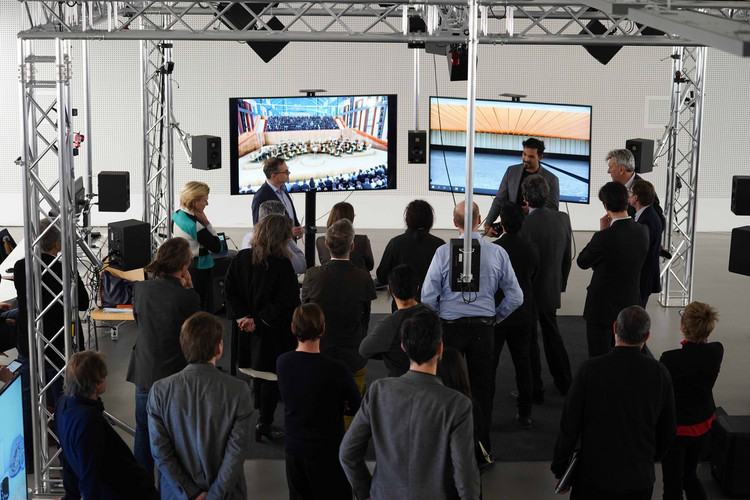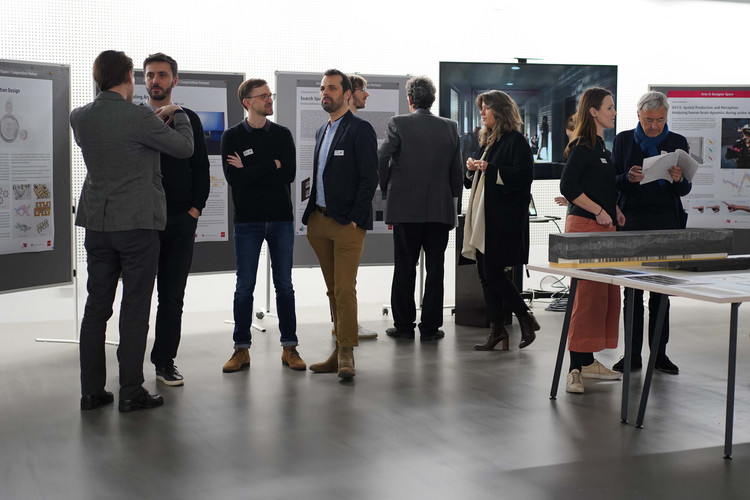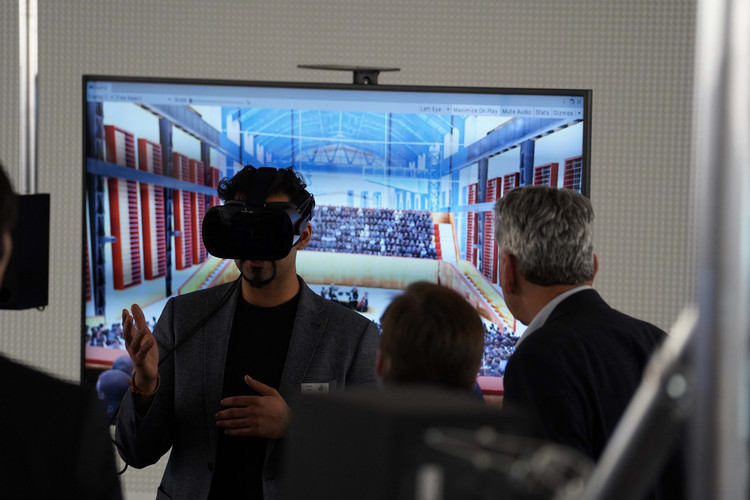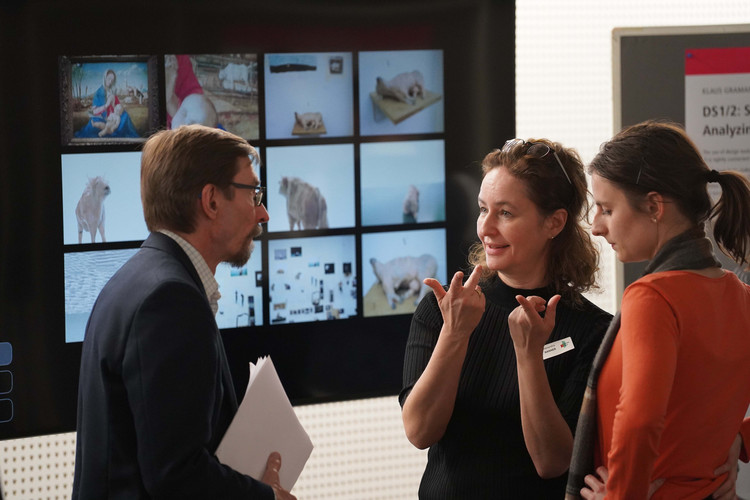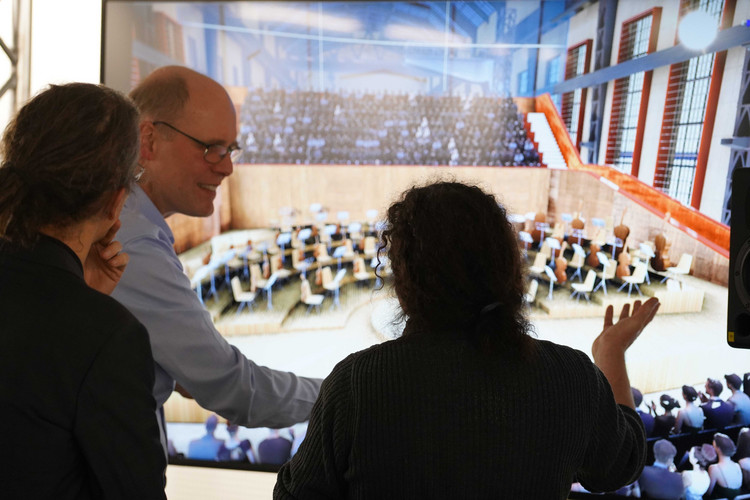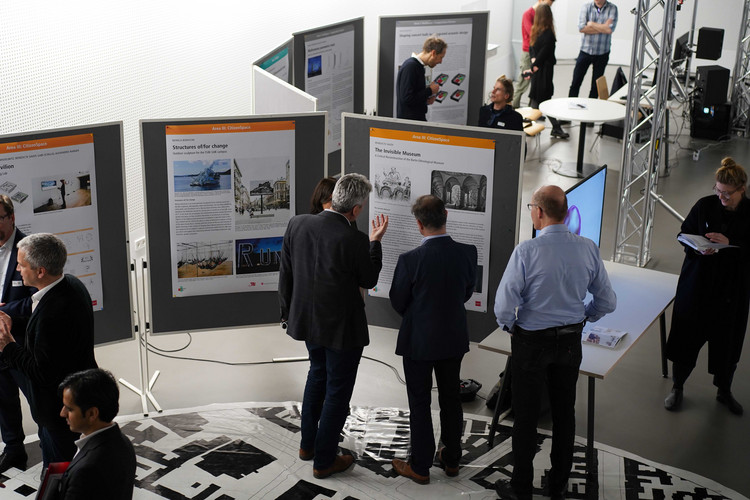Shaping Space
SHAPING SPACE is a research network of the University of the Arts (UdK) and the Technische Universität (TU) Berlin. The participating groups develop new techniques for designing spaces in the digital age and investigate the changes in design practices that accompany them. Special emphasis is placed on hybrid methods that combine traditional design tools with computational support and allow an immediate experience of the designed spaces through mixed reality techniques.
SHAPING SPACE builds upon the alliance between UdK and TU Berlin on the joint Campus Charlottenburg, coordinated by the Hybrid Plattform, and the establishment of combined design laboratories in late 2019. The collaboration of arts and sciences shall not only enable a comprehensive approach to design in the digital age, but also an advanced form of academic practice: the synthesis of a critical reflective artistic practice and a scientific approach embracing artistic forms of discourse.
Spatial design is a fundamental practice in humans’ material shaping of the world. As a cultural technique, it is a key activity in the design-based disciplines, in the arts, and in engineering. The digital revolution has enabled not only new representations of spatial design (of products, installations, buildings, cities, landscapes), but also new strategies that employ computational support throughout the design process and introduce radically different modalities of interaction. In view of this development, the central objective of the Einstein Center SHAPING SPACE is to promote a new working paradigm in spatial design. It will combine the hybrid integration of digital and physical modes of design, allow an immediate experience of the multimodal performance of the designed space, and facilitate the participation and collaboration of all relevant stakeholders throughout the design process. By creating a fluid transition between new computational and generative tools for the design of space and traditional practices working with sketches and physical models, we will, for the first time, exploit the full potential of digital tools in the creative process.
By integrating the simulation of light, sound, structure and energy into the early stages of design, we will not only gain better control over the multimodal ‘performance’ of space including the use of natural resources, but also gain new freedoms for creating novel and visionary spaces. The generative approach will allow for a more rapid development of spatial design and, at the same time, facilitate artists, designers, engineers, scientists and citizens to cooperate at every stage of the design process, thus supporting the collective refinement and the direct materialization of concepts. We anticipate that intuition and immediacy, facilitated by new tools for creation and interaction, will lead to a convergence of design knowing and engineering skills. By opening up the process of design to forms of co-production, intervention and participation, we expect changes in the social and aesthetic landscape of spatial design and spatial experience.
The proposed Einstein Center SHAPING SPACE builds upon the unique alliance between Universität der Künste Berlin (UdK) and Technische Universität Berlin (TU) on the Campus Charlottenburg, and the establishment of combined design laboratories in anticipation of the Center. The collaboration with partners from the Humboldt Universität zu Berlin (HU) and with the Hasso Plattner Institute Potsdam (HPI), and the cooperation with several of the most important architectural and design offices in and beyond Berlin will not only enable a comprehensive approach to design in the digital age, but an advanced form of academic practice. We believe that the synthesis of a critical reflective artistic practice and a scientific approach embracing artistic forms of discourse will offer avenues for addressing some of the most urgent problems of contemporary design and new methods for shaping space well into the future.
Within the group of PIs of the proposed Einstein Center there is substantial expertise and international recognition across the disciplines we consider essential for addressing our primary research goals. The Center will include scientists recognized through their academic achievements, and the coordination of large international research units as well as architects and artists internationally renowned for their innovative and often ground-breaking contributions to art and design, as evidenced through their numerous exhibitions and built work. We see the strengths of the Center as embedded not only in the depth, but also in the diversity of the expertise.
